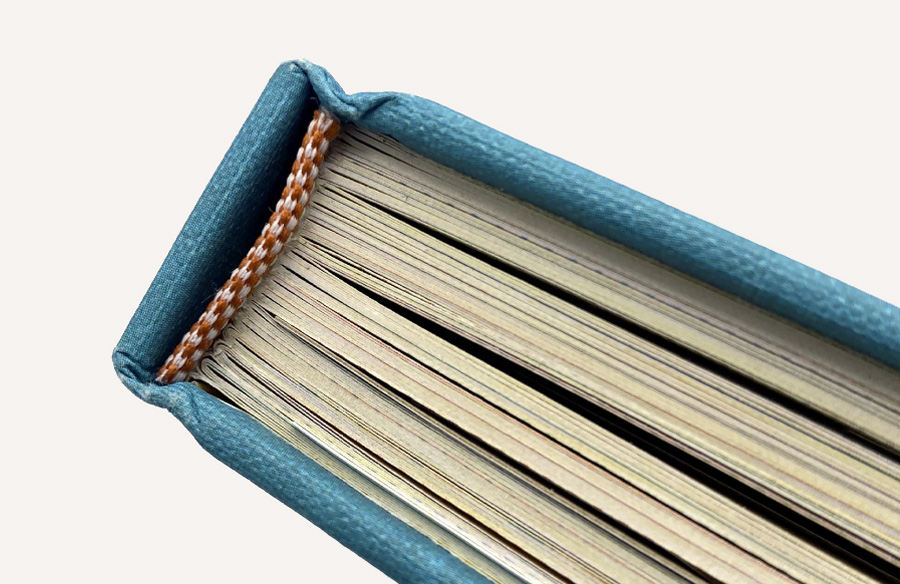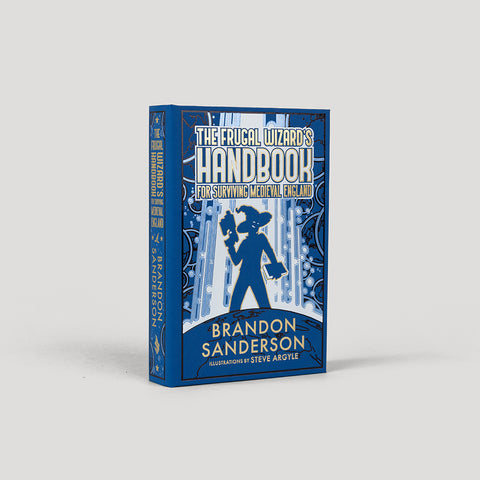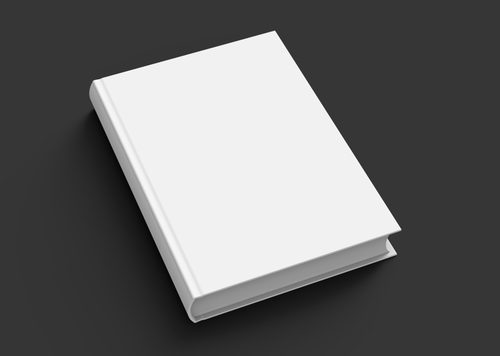Hardcover Books That Will Upgrade Your Home Library
Wiki Article
A Comprehensive Overview to the Process of Hardbound Books Printing
When you commence the journey of hardbound publication printing, understanding the entire process is necessary. As you browse via binding and top quality control, you'll find that every decision impacts the book's total charm.Understanding the Hardcover Book Structure
When you explore the world of hardcover publications, you'll swiftly discover that their framework is distinctive and intentional. You'll locate a fabric or natural leather treatment, which not only boosts aesthetics yet additionally includes to the publication's long life.The text block itself includes multiple trademarks, or folded up sheets, sewn with each other for stamina. You'll see that the spine is reinforced, permitting a smooth lay-flat analysis experience - hardcover books. Additionally, the book's weight frequently conveys a feeling of quality and permanence
Hardcover books normally include a dirt coat, which works as an advertising tool while securing the cover. Recognizing these components aids you value the workmanship behind hardbound publications and their unique appeal in the literary world.
Manuscript Preparation and Editing
Getting your manuscript ready for printing is important, and it starts with proper formatting guidelines. You'll need to recognize the editing and enhancing process to refine your job and ensure it reverberates with viewers. And also, understanding proofreading techniques can help you catch those bothersome mistakes before your book goes to publish.
Manuscript Format Guidelines
Appropriate manuscript format is necessary for creating a professional-looking hardcover book. Beginning by choosing a common font like Times New Roman or Arial in 12-point size. Use double-spacing throughout the record to enhance readability. Set your margins to 1 inch on all sides, providing your message room to breathe. Number your pages in the leading right edge, and include your phase titles at the start of each new section. Use clear headings to show areas, and avoid too much format like bold or italics unless necessary. Make certain to check your manuscript for consistency in vogue, ensuring that whatever from spelling to spacing follows your selected standards. Following these steps will certainly establish a solid structure for your publication.Editing Refine Essentials
Modifying your manuscript is an important step that can change it from an outline into a polished end product. Begin by checking out with your work seriously, concentrating on clarity, structure, and flow. Look for disparities in your story, character advancement, or argumentation. It's useful to take breaks in between rounds of modifying to obtain fresh perspectives. Do not wait to reduce unneeded web content or rephrase unpleasant sentences; this will certainly enhance readability. Consider looking for feedback from relied on peers or expert editors who can give useful insights. Bear in mind, modifying isn't nearly fixing mistakes; it has to do with improving your voice and ensuring your message reverberates with visitors. Welcome the process, and you'll see your manuscript sparkle.Checking Methods Summary
When you've polished your manuscript via modifying, the next step is to ensure it's cost-free of errors that can distract readers. Beginning by relaxing after editing and enhancing; fresh eyes capture mistakes much better. Read your manuscript out loud-- this assists you hear unpleasant phrasing and spot typos. Usage digital devices like spell checkers for initial scans, yet do not depend only on them. Consider publishing your manuscript; analysis theoretically can reveal errors that screens miss out on. Emphasis on one kind of error at once, whether it's spelling or grammar, to avoid sensation bewildered. Employ a trusted good friend or expert proofreader to offer a fresh perspective. Their responses can highlight issues you may forget.Creating guide Cover and Inside
When you're creating your book cover and interior, you'll wish to concentrate on important design elements that capture your audience's focus. Picking the ideal typography designs and very carefully picking shades and images can make all the distinction in communicating your publication's theme. Let's explore just how these choices can elevate your work and bring in viewers.Necessary Layout Aspects
Developing an appealing publication cover and a properly designed interior is essential for attracting readers and enhancing their experience. Start with the cover; it's your very first perception. Choose shades and photos that show your book's motif and state of mind. Ensure your title stands out and is legible, even in thumbnail dimension.For the interior, emphasis on format and white area. A clean, well organized style assists readers navigate easily. Consider making use of chapter headings and subheadings to assist them through the material. Aesthetic elements, like images or graphics, can likewise boost interaction yet ought to enhance the text, not bewilder it. Bear in mind, a cohesive helpful resources layout throughout your book cultivates a professional appearance that can considerably impact a visitor's decision to choose it up.
Choosing Typography Styles
Typography plays a crucial duty in both the publication cover and indoor style, shaping how readers regard your content. When picking typography designs, consider your book's style and target audience. Believe regarding hierarchy-- make use of different designs for headings and body message to direct viewers effortlessly through your job.Color and Images Selection
Picking the ideal colors and images is crucial for catching readers' interest and conveying your publication's styles. Start by considering your category; dynamic shades might function for a kids's publication, while soft tones match a secret story. hardcover books. Use images that resonates with your web content-- pictures, illustrations, or abstract designs can improve your messageWhen designing the cover, make specific the images does not bewilder the title and writer's name; clarity is essential. This cohesive strategy not just elevates your book's aesthetic but likewise enhances the viewers's experience, making it extra memorable.
Selecting the Right Paper and Materials
When choosing paper and products for your hardbound publication, it's important to consider exactly how they'll affect the general look of your task. Beginning by picking the appropriate paper weight; heavier stock frequently conveys high quality and toughness, while lighter paper can develop an extra fragile touch. Take into consideration the coating as well; shiny paper boosts photos and shades, while matte can supply an advanced, downplayed look.Don't neglect concerning the cover products. Towel, natural leather, or published paper can establish the tone for your book. If your project includes photos, decide for acid-free paper to stop yellowing gradually. Furthermore, think concerning the binding products; utilizing premium adhesive guarantees your publication lasts.
Ultimately, the selections you make right here show your vision, so take the time to sample various products (hardcover books). Your choices will certainly assist produce a book that's not just aesthetically attractive however useful and also sturdy
The Printing Process: Strategies and Technologies
A range of printing strategies and innovations can bring your hardbound book to life, each offering one-of-a-kind advantages. Digital printing is a preferred option for brief runs, allowing for fast turnaround and economical options. It's perfect when you require to publish smaller amounts without giving up high quality. On the various other hand, offset printing excels in generating large volumes, supplying high-quality and constant outcomes. This method is optimal for extensive magazines where shade precision and great details matter.Recognizing these strategies aids you make educated choices, ensuring your hardcover book not just looks great however likewise meets your manufacturing requires successfully. Select the right strategy to boost your book's appeal and influence.
Binding Methods for Hardcover Books
Several binding methods can transform your hardcover book right into a resilient and appealing item. One preferred choice holds true binding technique, where the web pages are stitched and after that connected to a tight cover. This supplies exceptional toughness and a specialist look. One more technique is the ideal binding, which uses glue to hold the web pages with each other, allowing for a streamlined spine but much less longevity compared to case binding.You could additionally consider spiral link binding, which allows your book to lay flat, making it perfect for handbooks or workbooks. Each binding technique has its advantages and fits different needs, so assume about your book's objective and target market when picking the try this out ideal alternative for your task.
Quality Control and Last Touches
After choosing the right binding method for your hardcover book, top quality control ends up being important to confirm your end product fulfills your expectations. Beginning by evaluating the published pages for any errors or variances in color and layout. You do not desire to miss any typos or misprints that can influence your visitors' experience.Next, examine the binding honesty. Verify the pages are securely attached which the spinal column is durable. A well-bound book not just looks expert but additionally really feels resilient in your hands.
Additionally, take note of the cover. Try to find any scuff marks or imbalances in the art work. If you've selected special finishes like embossing or aluminum foil stamping, see to it they're applied regularly throughout all copies.
Finally, carry out a detailed assessment of the entire set prior to moving to distribution. This means, you can confirm that every publication reflects your high requirements.
Frequently Asked Inquiries
How Long Does the Hardcover Publication Printing Refine Usually Take?

What Is the Minimum Order Quantity for Hardbound Books?
The minimum order amount for hardbound books generally starts around 100 duplicates, yet it can vary based on the printer. You need to contact your selected printing service for their specific needs and prices.
Can I Publish Hardcover Books in Customized Sizes?
Yes, you can print hardcover books in customized sizes. Lots of printing services offer adaptability with measurements, enabling you to choose a format that matches your job. Just validate the requirements before placing your order.
Exist Eco-Friendly Options for Hardbound Publication Printing?
Yes, you can locate green alternatives for hardbound publication printing. Lots of business utilize sustainable inks and recycled products. Just ask your printer concerning their environment-friendly techniques to assure your project straightens with your ecological values.What Are the Costs Related To Hardbound Book Printing?
When thinking about hardcover publication printing expenses, you'll need to consider products, layout, and printing techniques. Additional costs like delivery and binding can likewise influence your general spending plan, so plan as necessary for your project.When you start the journey of hardcover publication printing, understanding the whole process is vital.A variety of printing strategies and innovations can bring your hardbound publication to life, each offering distinct benefits. Exactly how Lengthy Does the Hardcover Publication Printing Refine Usually Take?
The hardbound publication printing process normally takes about 2 to 6 weeks.Yes, you can locate green options for hardbound book printing.
Report this wiki page